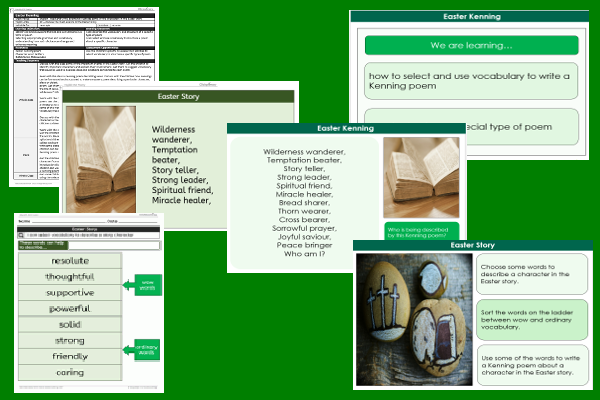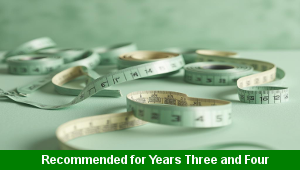Easter Kenning

This English teaching pack for Key Stage Two gets the children to read and write example Kenning poems to illustrate and describe some of the different characters that feature in scenes from the Easter story.
The class can produce vocabulary lists of powerful and descriptive vocabulary words that can be used to describe one of the main characters as preparation for writing a Kenning poem.
Download this teaching pack including a lesson plan, classroom activities and an interactive presentation to read and write example Kenning poems to illustrate and describe some of the different characters that feature in scenes from the Easter story
Activities in this teaching pack include a shared reading text to identify and define vocabulary that has been used to describe a significant character in the Easter story as part of a Kenning poem and a template to select and record descriptive vocabulary words that can be used in a specific type of poem.
The interactive presentation gets the children to explore how to write Kenning poems to illustrate and describe some of the characters in the Easter story.
This lesson is part of an English scheme of work to get the children to practise composing and publishing different types of poems that use line structures and vocabulary to illustrate scenes in the Easter story. There are teaching activities for shared learning, differentiated worksheets to support independent learning and interactive presentations to introduce concepts and key skills.
-

Length Calculations
Practise using number calculations skills for addition, subtraction, division and multiplication when solving problems related to length measurements
-

Maths Calculations Assessment
Assess abilities in solving a range of different number problems for addition and subtraction when working with informal and formal written calculations
-

Determinant Lists
Explain and model how to make lists of objects used and found in different locations to match the correct determinants of a and an
-

English SPAG Assessment
Assess abilities in composing sentences for fiction and non-fiction using the correct spellings, punctuation marks and grammar vocabulary phrases
